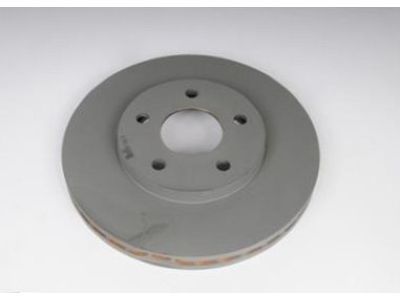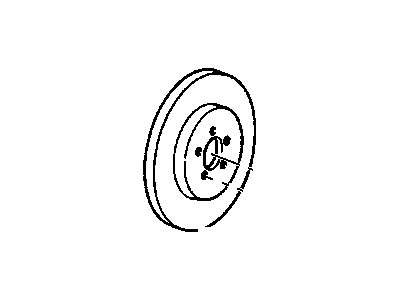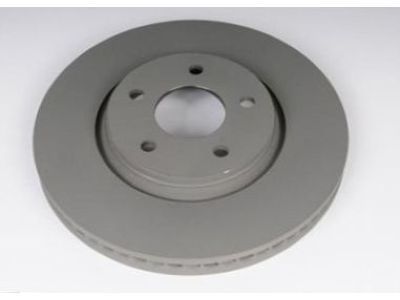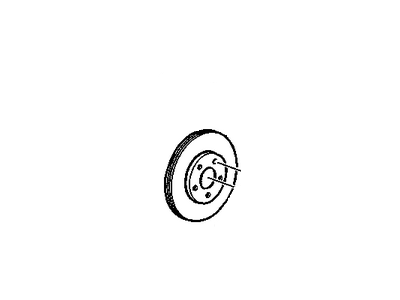
My Garage
My Account
Cart
Genuine Pontiac G6 Brake Disc
Disc Rotor- Select Vehicle by Model
- Select Vehicle by VIN
Select Vehicle by Model
orMake
Model
Year
Select Vehicle by VIN
For the most accurate results, select vehicle by your VIN (Vehicle Identification Number).
3 Brake Discs found
Pontiac G6 Front Brake Rotor
Part Number: 19303828$52.53 MSRP: $160.27You Save: $107.74 (68%)Ships in 1-2 Business Days
Pontiac G6 Brake Disc
Brake Disc is an important component of the disc brake system of Pontiac G6 vehicles since it, together with the brake pads, are responsible for creating sufficient friction in order to ensure that the vehicle is able to safely stop. These rotors which are normally made from gray iron material are suitable to work at high temperatures and offer high wear resistance due to their frequent use. Some of the styles of Brake Discs, which might have been used on Pontiac G6 models within the years include the drilled, slotted, and two piece Brake Discs with their features like heat dissipation as well as noise reduction. Various rotor designs have implications to its performance, drilled or slotted rotors helps in water removal and cooling but this causes pad wear. It is important to practice maintenance, because even such problems as warping, cracking or rust can lead to a decrease in the stopping power of a car. It is thus relevant to track the state of the Brake Disc whereby when one notices signs of noise or vibration, one should replace it so as to ensure safety and efficiency of the Pontiac G6.
Each OEM Pontiac G6 Brake Disc we offer is competitively priced and comes with the assurance of the manufacturer's warranty for the part. Furthermore, we guarantee the speedy delivery of your orders right to your doorstep. Our hassle-free return policy is also in place for your peace of mind.
Pontiac G6 Brake Disc Parts Questions & Experts Answers
- Q: How can a manufacturer correct Brake Disc runout during Brake maintenance on Pontiac G6?A:The manufacturer may have installed a thin plate with a small V-notch pointing to one of the wheel studs between the disc and the hub flange to correct disc runout. Before removing the plate, mark the stud that the V-notch points to. If the disc is to be machined or replaced, the plate can potentially be removed and discarded. Check the disc runout on the machined or replacement disc with the plate and disc installed; if excessive runout is present, remove the plate and check again. Begin by loosening the wheel lug nuts, raising the vehicle, and securely supporting it on jackstands before removing the wheel. Next, remove the brake caliper without disconnecting the brake hose, and suspend it out of the way with wire, ensuring the hose is not stretched or twisted. Reinstall three inverted lug nuts to hold the disc against the hub, possibly using washers to take up space. Visually inspect the disc surface for score marks, cracks, and other damage; while light scratches and shallow grooves are normal, deep score marks or cracks may necessitate refinishing or replacement. If pulsating occurs during brake application, suspect disc runout. Common symptoms of damaged or worn brake discs include pulsation in the brake pedal or loud grinding noises from severely worn Brake Pads, indicating potential replacement. To check disc runout, place a dial indicator about 1/2-inch from the outer edge of the disc, set it to zero, and turn the disc; a reading exceeding 0.003 of an inch may require refinishing or replacement. The disc must not be machined below the specified minimum refinish thickness, which is cast into the disc; use a micrometer to measure thickness. Remove the caliper mounting bracket, mark the disc in relation to the hub for proper reinstallation, and then remove the disc, cutting off any wave washers if present. Clean the hub flange and inside of the brake disc thoroughly before installing the disc onto the hub assembly. Install the caliper mounting bracket and tighten the bolts, then place the caliper over the disc and onto the bracket, securing it with mounting bolts. Finally, install the wheel, lower the vehicle, torque the lug nuts, and depress the brake pedal a few times to bring the brake pads into contact with the rotor, checking the operation of the brakes thoroughly before normal use.














